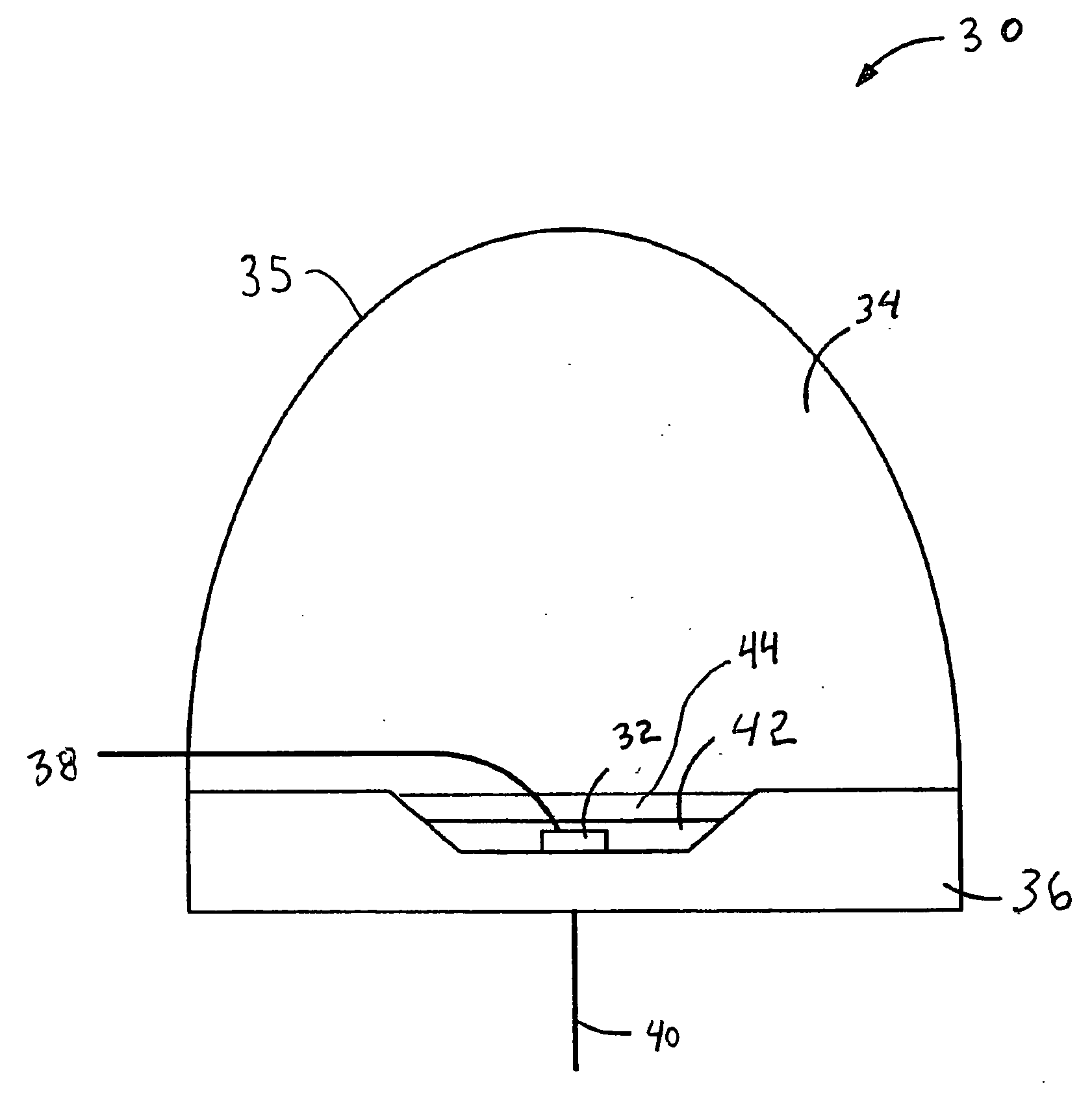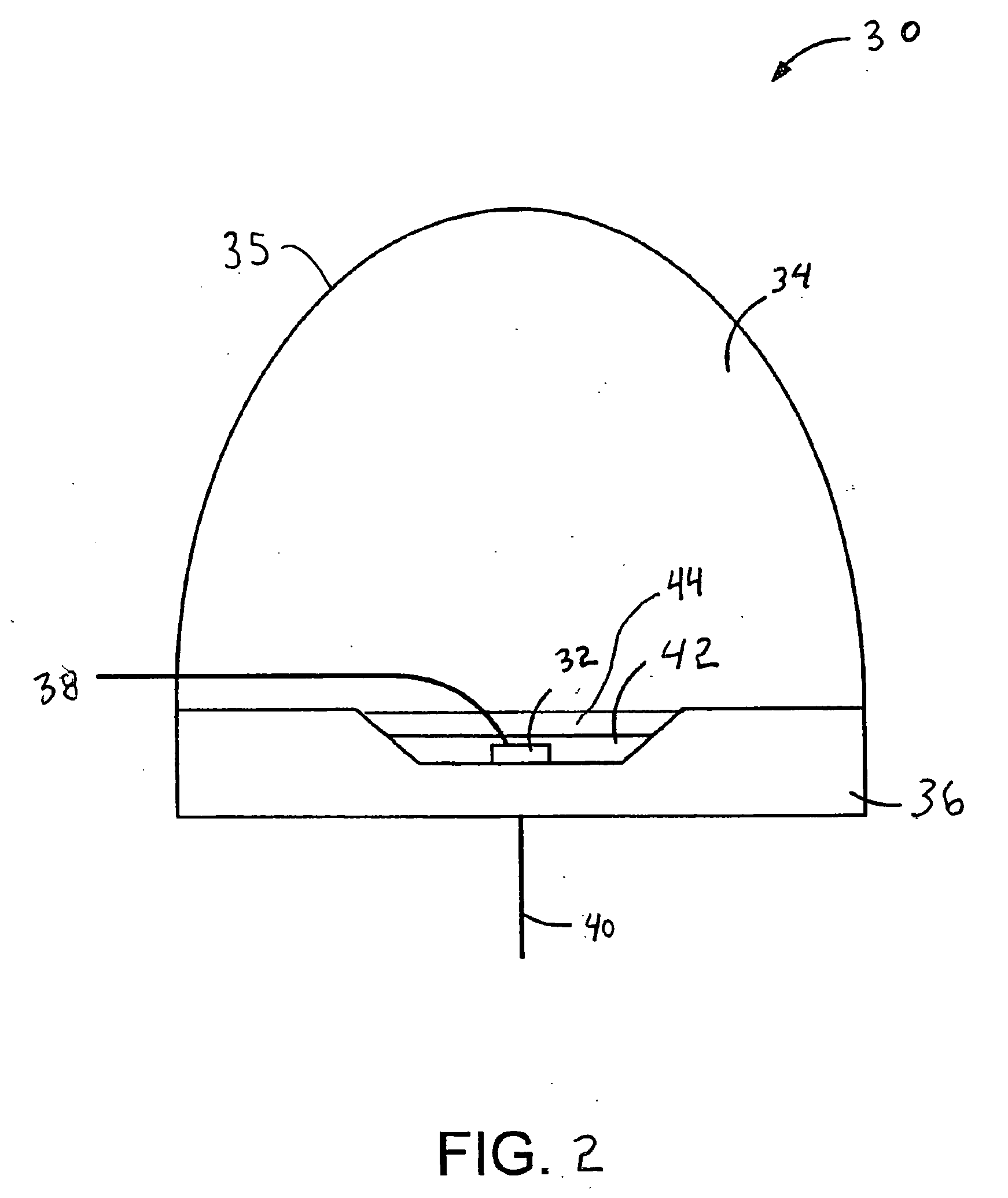White LEDs with tunable CRI
a white light led and phosphor conversion technology, applied in the field of phosphors, can solve the problems of difficult to fine-tune the cri of a phosphor-converted white light led around given color point and luminous efficacy targets, and achieve the effect of tunable color rendering index (cri) and luminosity
- Summary
- Abstract
- Description
- Claims
- Application Information
AI Technical Summary
Benefits of technology
Problems solved by technology
Method used
Image
Examples
examples
[0090] Light sources using phosphor blends according to the above embodiments may be produced. Two different exemplary prophetic trials are presented. In a first trial, two different phosphor composition layers A and B are investigated. This trial was for two triphosphor compositions targeting the 3500K point on the black body locus of the CIE chromaticity diagram. This color point is chosen merely for illustration and by no means restricts the scope of applicability of this invention. The spectral weight amounts of each phosphor in composition layers A and B are listed in Table 1. The phosphors selected for this trial were 3.5MgO*0.5MgF2*GeO2:Mn4+ (“MFG”) as red, Ca5(PO4)3Cl:Eu2+,Mn2+ (“HALO”) for orange, SrAl2O4:Eu2+ for green and (Ca,Sr,Ba)5(PO4)3Cl:Eu2+ (“SECA”) for blue.
TABLE 1CompositionSECASrAl2O4HALOMFGTotalA0.10220.26750.63030.00001.0000B0.07710.33820.00000.58471.0000
[0091] Table 2 shows a set of simulated spectral models at different levels of spectral contribution from ...
PUM
 Login to View More
Login to View More Abstract
Description
Claims
Application Information
 Login to View More
Login to View More - R&D
- Intellectual Property
- Life Sciences
- Materials
- Tech Scout
- Unparalleled Data Quality
- Higher Quality Content
- 60% Fewer Hallucinations
Browse by: Latest US Patents, China's latest patents, Technical Efficacy Thesaurus, Application Domain, Technology Topic, Popular Technical Reports.
© 2025 PatSnap. All rights reserved.Legal|Privacy policy|Modern Slavery Act Transparency Statement|Sitemap|About US| Contact US: help@patsnap.com



